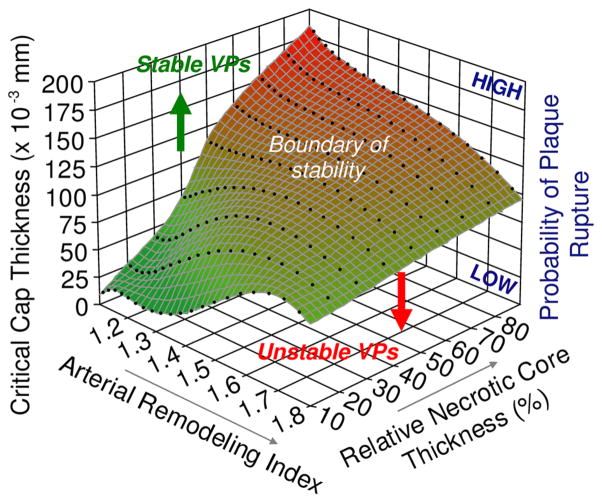FIGURE 2.
Three-dimensional plot highlighting the influences of remodeling index and relative necrotic core thickness on critical cap thickness. The critical cap thickness is defined as the value at which cap stress reaches the critical or rupture point tensile stress. This result shows that there is no single such threshold. Rather this cap rupture thickness depends strongly on remodeling index and relative necrotic core thickness. More interestingly, plaques with low remodeling index and a large relative necrotic core thickness can be seen to be more prone to rupture, with a high critical cap thickness. This finding may explain, on the one hand, the progression and growth of clinically silent lesions and, on the other, why plaques with relatively small stenoses have been observed to frequently rupture. Adapted from Fig. 5 of Ohayon et al.60

